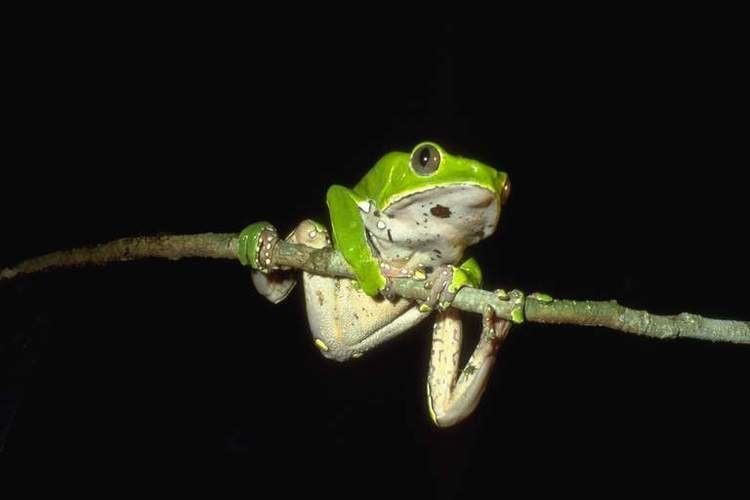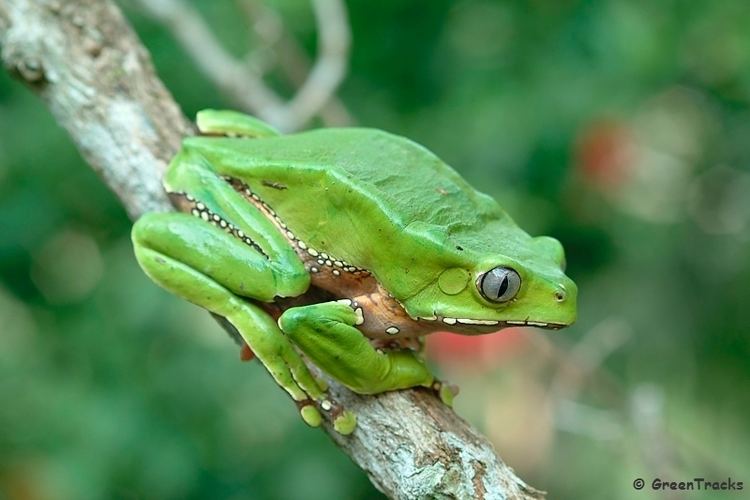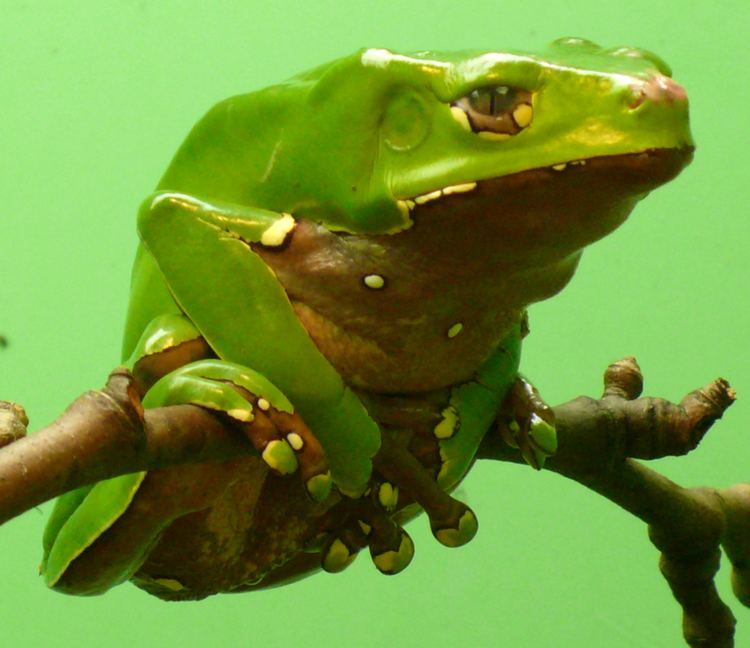Order Anura Higher classification Phyllomedusa | Phylum Chordata Scientific name Phyllomedusa bicolor Rank Species | |
 | ||
Similar Phyllomedusa, Frog, Amphibians, Phyllomedusa sauvagii, Hylidae | ||
Calls n croaks of the giant waxy monkey frog phyllomedusa bicolor
Phyllomedusa bicolor, also known as blue-and-yellow frog, bicoloured tree-frog, giant monkey frog, giant leaf frog, or waxy-monkey treefrog, is a hylid frog. It is found in the Amazon basin as well as some surrounding areas.
Contents
- Calls n croaks of the giant waxy monkey frog phyllomedusa bicolor
- Phyllomedusa bicolor waxing
- Description
- Distribution
- Habitat and behaviour
- Conservation
- Medicinal use
- References

Phyllomedusa bicolor waxing
Description

Males measure 91–103 mm (3.6–4.1 in) and females 111–119 mm (4.4–4.7 in) in snout–vent length. The dorsum is dark green whereas the belly is white to yellow-white or cream. Lower lips, chest and front legs bear sparse white spots with dark frames; these are more dense on the flanks and hind legs. Fingers are transparent brown and have large, green adhesive discs. There is a prominent gland extending from behind the eye over the tympanum. The iris is dark gray.
Distribution

It is found throughout the Amazon Rain forest of northern Bolivia, western and northern Brazil, southeastern Colombia, eastern Peru, southern and eastern Venezuela, and the Guianas. Occasionally, it is also found in the riparian forest area of the Cerrado, a vast tropical savanna ecoregion of Brazil.
Habitat and behaviour

Phyllomedusa bicolor is a nocturnal, arboreal frog. Males call from trees in tropical humid forests. Female and male construct a leaf-nest above forest pools. When the eggs hatch from these nests, the tadpoles fall into the water, where they continue the development into adult frogs. Peak reproduction occurs during the rainy season.
Conservation

The IUCN endangered species database lists them in the "Least Concern" category, in view of their current wide distribution and large population.
Medicinal use
The skin secretion of the frog contains deltorphin, deltorphin I, deltorphin II and dermorphin.
